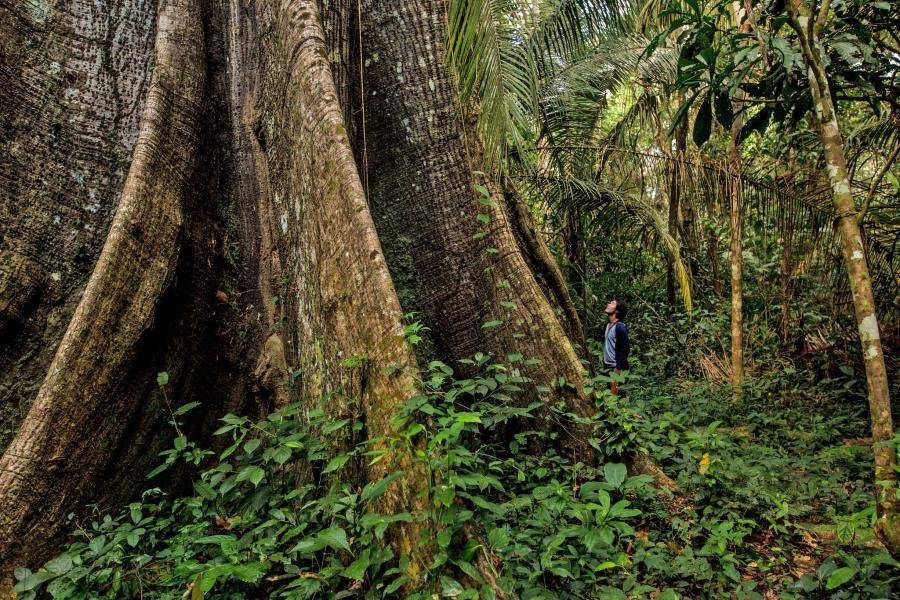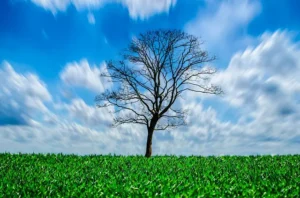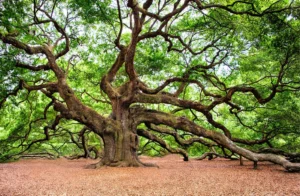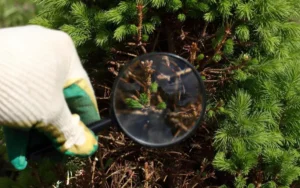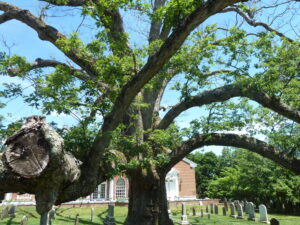Rainforests are incredibly diverse ecosystems, home to a vast range of trees and plants that provide food, shelter, and essential ecosystem services. These rainforest trees and plants play a crucial role in maintaining biodiversity and regulating the climate. In this article, we explore 20 rainforest trees and plants, providing descriptions, identification methods, and fascinating facts about each one.
1. Brazil Nut Tree (Bertholletia excelsa)
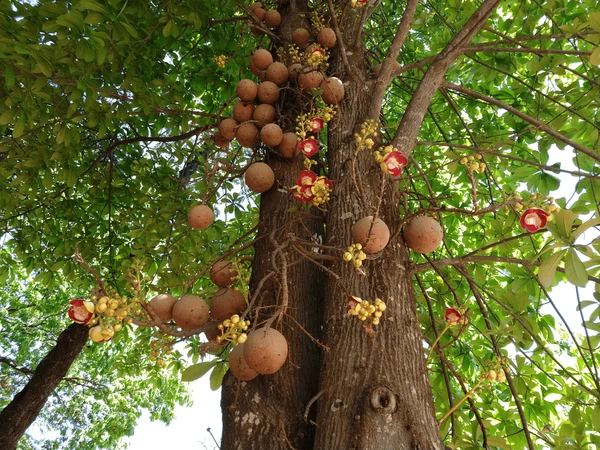
The Brazil Nut Tree is one of the tallest rainforest trees, reaching heights of up to 160 feet. This tree produces large, round fruits containing edible seeds known as Brazil nuts, which are highly nutritious. It is native to the Amazon rainforest and depends on specific orchid bees for pollination. The tree plays a critical role in local economies, as Brazil nuts are harvested and sold worldwide. These trees can live for over 500 years and provide a sustainable source of food and income for indigenous communities.
2. Kapok Tree (Ceiba pentandra)
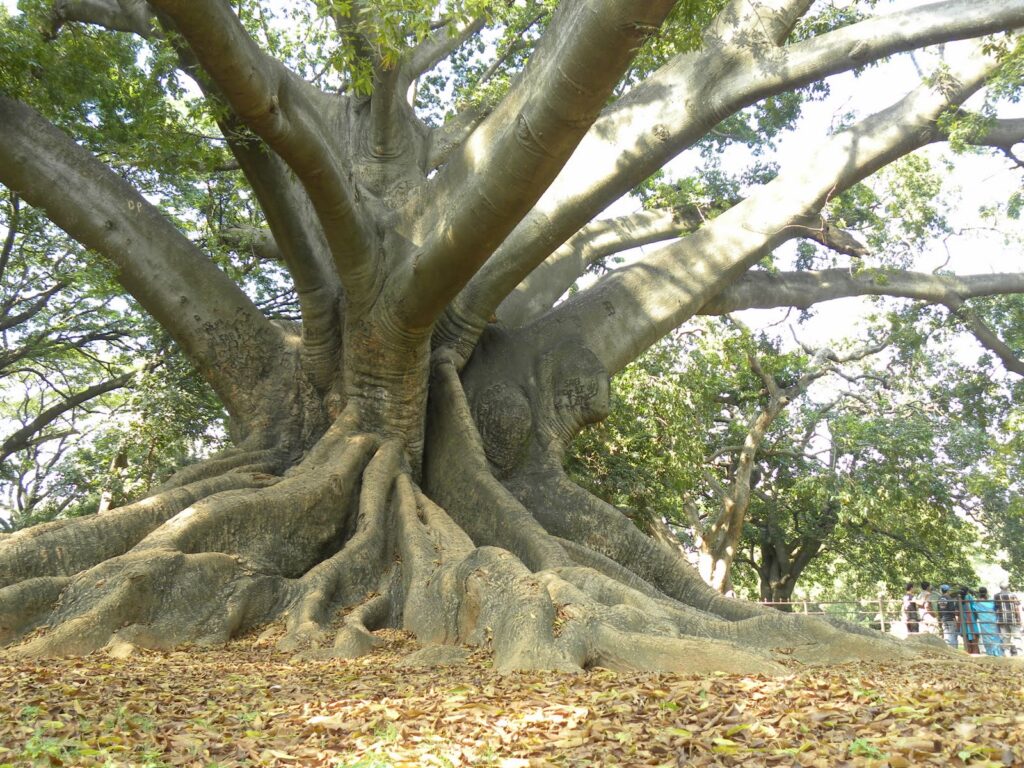
The Kapok Tree is a towering giant of the rainforest, often reaching up to 200 feet in height. It is easily identified by its massive buttressed roots and large, cotton-like seed fibers. These trees are vital to rainforest ecosystems, providing shelter for numerous species, including birds, insects, and monkeys. Historically, Kapok fiber was used to stuff life jackets and pillows. The Kapok tree is considered sacred by some indigenous cultures due to its impressive size and significance in their daily lives.
3. Mahogany (Swietenia macrophylla)
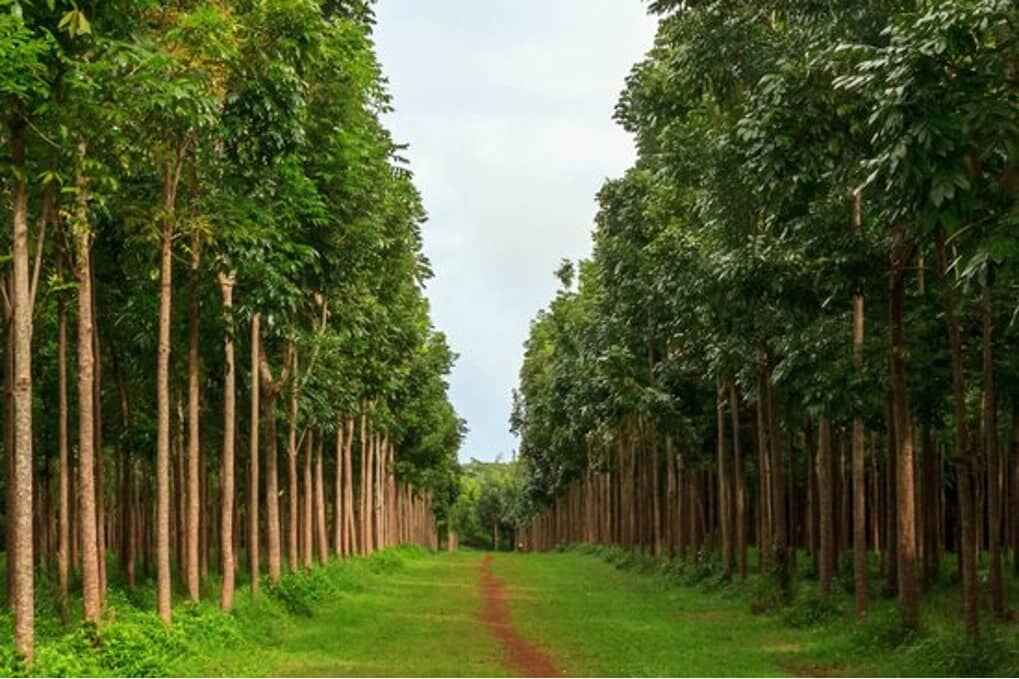
Mahogany trees are known for their straight trunks and rich, reddish-brown wood, which is highly valued for use in furniture and musical instruments. These trees grow up to 150 feet tall and are native to the rainforests of Central and South America. Overharvesting has led to a decline in mahogany populations, making them a protected species in many areas. Sustainable harvesting practices are crucial to preserving these important rainforest trees, which also provide habitats for many species of animals and plants.
4. Rubber Tree (Hevea brasiliensis)
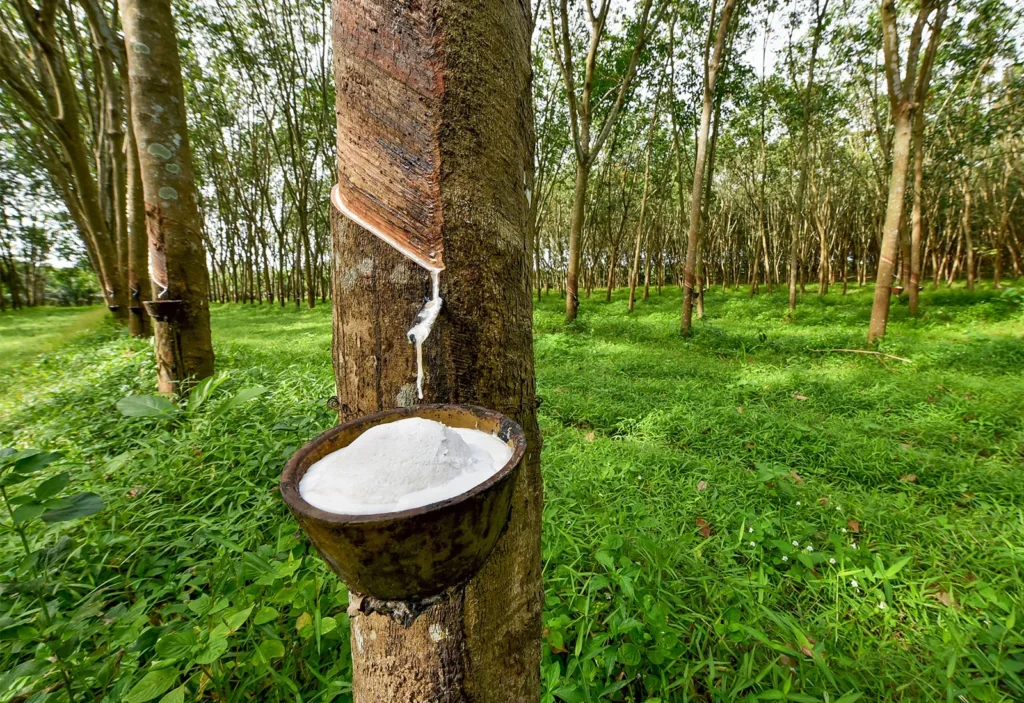
The Rubber Tree is an iconic rainforest tree known for producing latex, the primary ingredient in natural rubber. These trees grow up to 100 feet tall and are distinguished by their smooth, gray bark. Rubber tapping, when done sustainably, allows the tree to continue producing latex for many years. Native to the Amazon rainforest, rubber trees are now cultivated in tropical regions around the world, especially in Southeast Asia. The rubber industry has had a significant economic impact, but sustainable management is essential to preserving these valuable rainforest trees.
5. Cacao Tree (Theobroma cacao)
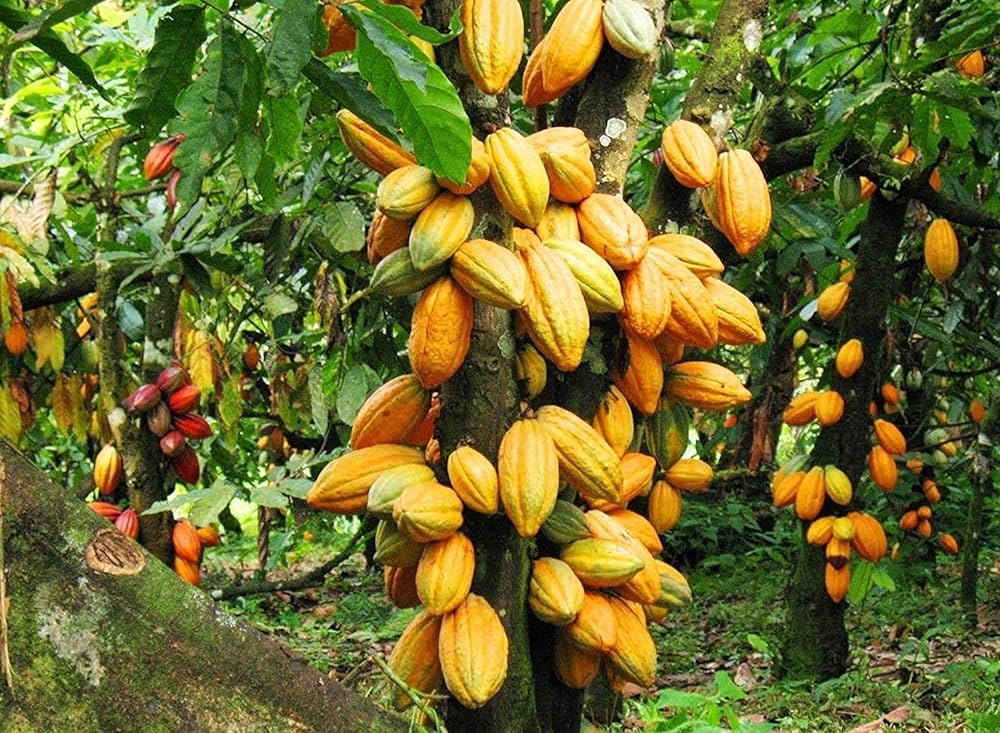
The Cacao Tree is the source of chocolate, producing pods filled with seeds that are processed to make cocoa and chocolate. These small trees grow up to 30 feet tall and thrive in the shaded understory of the rainforest. The scientific name Theobroma means “food of the gods,” reflecting the historical importance of cacao in many cultures. The cacao tree is crucial to the global chocolate industry and supports the livelihoods of millions of farmers in tropical regions. It also plays an important role in biodiversity, attracting pollinators and providing food for wildlife.
6. Strangler Fig (Ficus spp.)
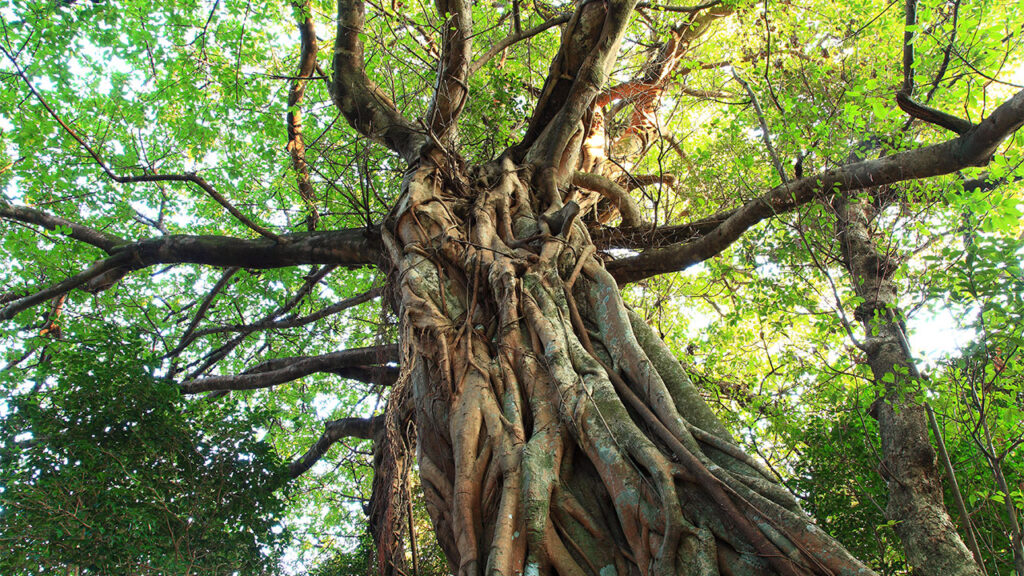
The Strangler Fig is a unique rainforest tree that starts its life as an epiphyte, growing on the surface of other trees. Over time, the fig sends down roots that wrap around its host, eventually overtaking it. These trees are easily identified by their twisted, root-like structures that surround the host tree. Strangler figs play a vital role in rainforest ecosystems, providing food for a wide variety of animals, including birds and mammals. Despite their parasitic nature, they contribute to the structural diversity of the rainforest canopy.
7. Balsa Tree (Ochroma pyramidale)
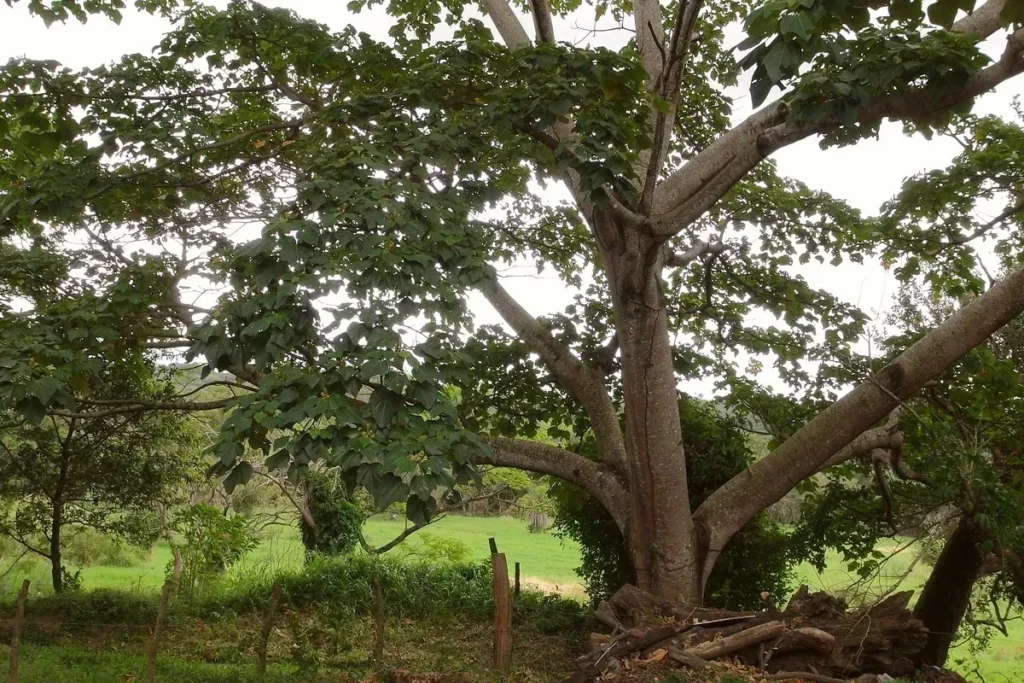
The Balsa Tree is known for its extremely lightweight wood, which is often used in model-making, construction, and crafts. These trees grow rapidly, reaching heights of up to 100 feet in just a few years. Balsa wood is strong yet light, making it ideal for a variety of applications. In the rainforest, balsa trees are an important pioneer species, quickly colonizing disturbed areas and helping to restore the forest ecosystem. Their rapid growth and light wood structure make them a valuable resource in both natural and economic terms.
8. Cecropia Tree (Cecropia peltata)
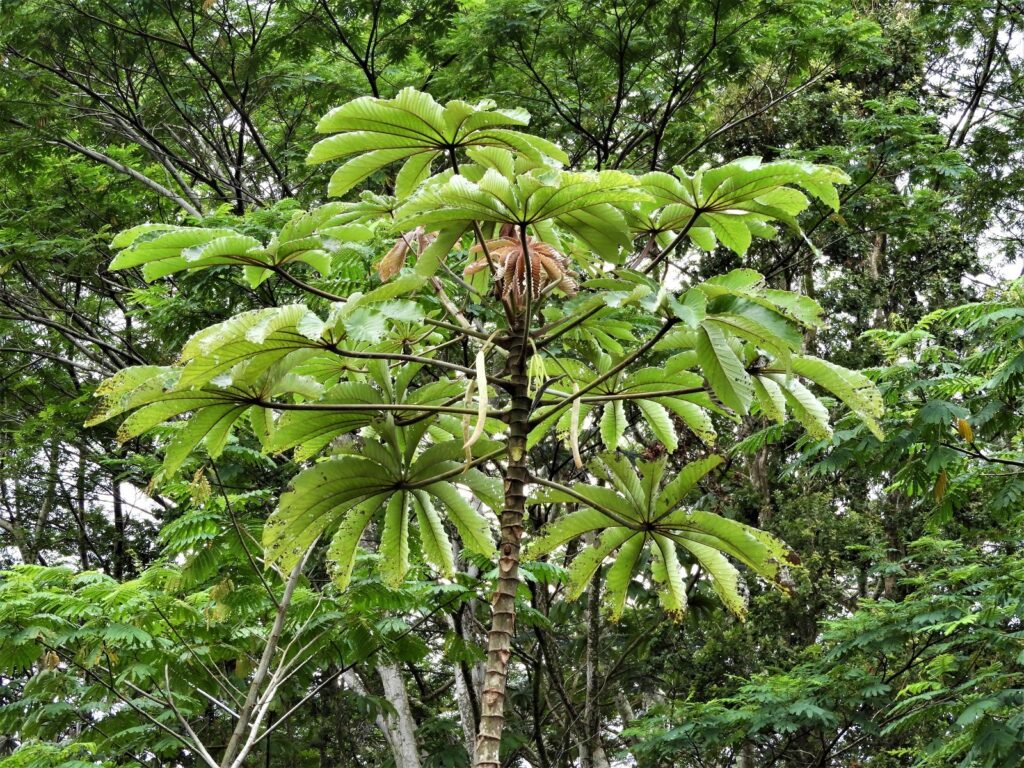
The Cecropia Tree is a fast-growing species commonly found in the rainforests of Central and South America. It can be identified by its large, umbrella-like leaves and hollow stems, which provide shelter for ants. In return, the ants protect the tree from herbivores, creating a mutualistic relationship. These rainforest trees play a crucial role in the ecosystem by providing food for various animals and contributing to the regrowth of disturbed forest areas. Cecropia trees are often among the first to colonize cleared or damaged areas, helping to stabilize the environment.
9. Acai Palm (Euterpe oleracea)
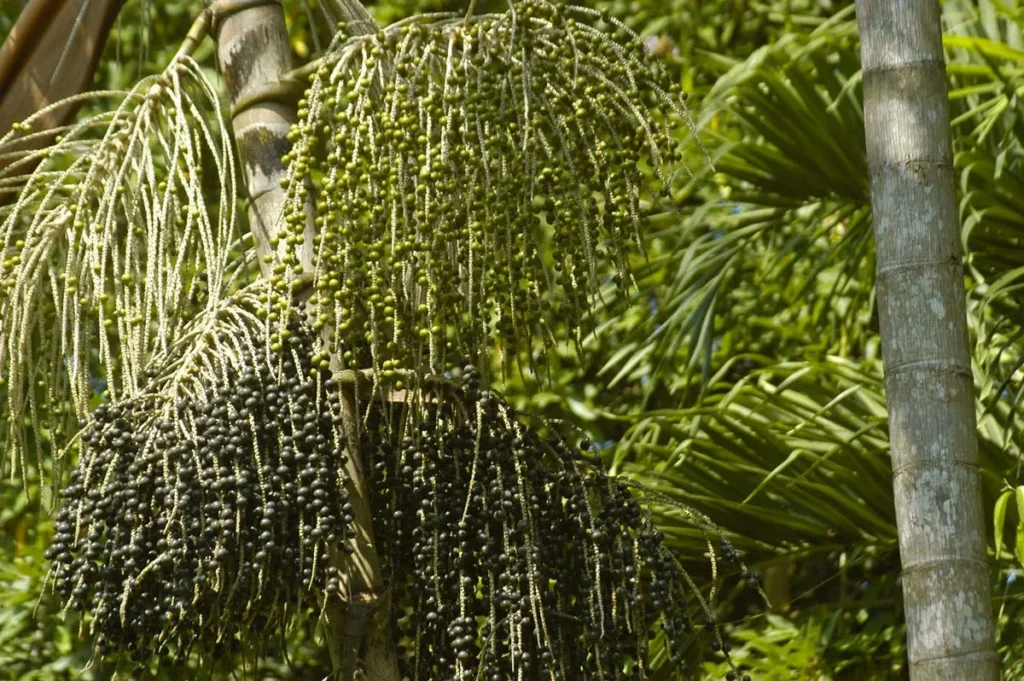
The Acai Palm is a tall, slender tree native to the Amazon rainforest, growing up to 80 feet. It is best known for producing acai berries, which have gained global popularity as a “superfood” due to their high antioxidant content. The tree’s heart, known as “heart of palm,” is also harvested for culinary uses. Acai palms thrive in wet, swampy areas of the rainforest and play an important role in supporting local wildlife by providing food and habitat. The tree is economically significant, especially for communities that harvest and sell acai products.
10. Ironwood Tree (Olneya tesota)
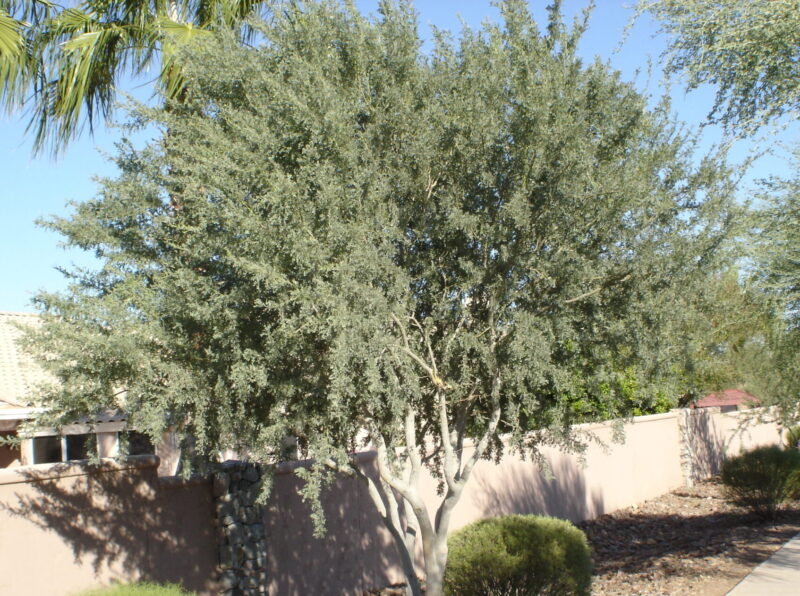
The Ironwood Tree is native to the rainforests of Central and South America and is known for its extremely dense, hard wood. These trees grow up to 50 feet tall and have silvery-green leaves. The wood is so dense that it sinks in water, making it highly prized for construction and furniture. Ironwood trees are slow-growing but long-lived, often surviving for centuries. Their strength and durability make them a valuable resource, but overharvesting has led to a decline in some populations. Conservation efforts are important to ensure their sustainability.
11. Monkey Pod Tree (Samanea saman)
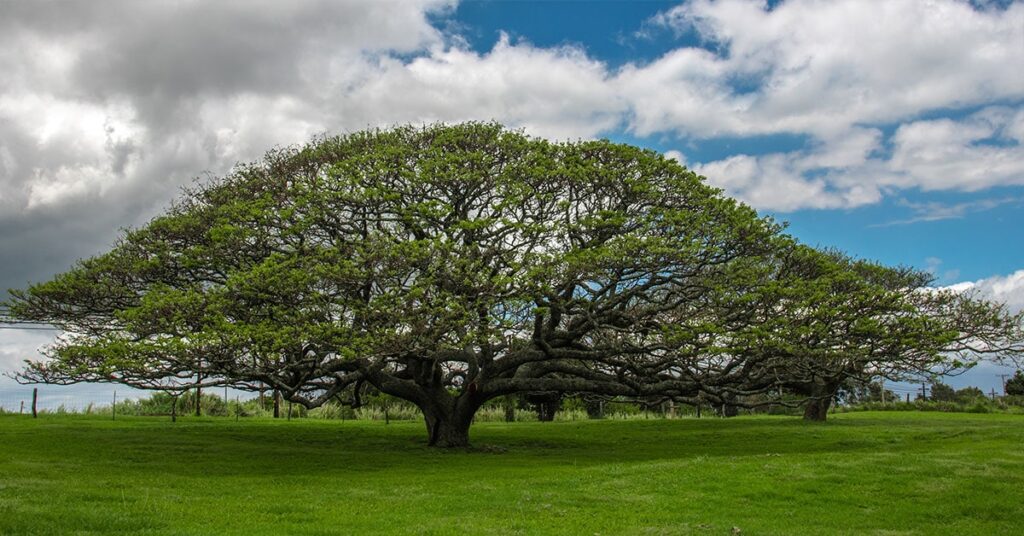
The Monkey Pod Tree is a large, spreading tree with an umbrella-shaped canopy, growing up to 80 feet tall. It is widely recognized for its attractive appearance and is often used in landscaping and parks. The tree produces pods that are consumed by wildlife, including monkeys, which is how it got its name. Monkey pod wood is also used in furniture-making due to its durability and beautiful grain. In the rainforest, these trees provide essential shade and help maintain soil health by fixing nitrogen in the soil.
12. Soursop Tree (Annona muricata)

The Soursop Tree is a small to medium-sized tree, typically growing up to 30 feet, known for its large, spiky green fruits. The fruit has a sweet and tangy flavor and is used in a variety of culinary dishes, including juices, ice creams, and desserts. Soursop is also widely used in traditional medicine for its potential health benefits, including anti-inflammatory and anti-cancer properties. These rainforest trees are important for local agriculture and play a role in supporting pollinators and other wildlife in their native habitats.
13. Dragon’s Blood Tree (Dracaena cinnabari)
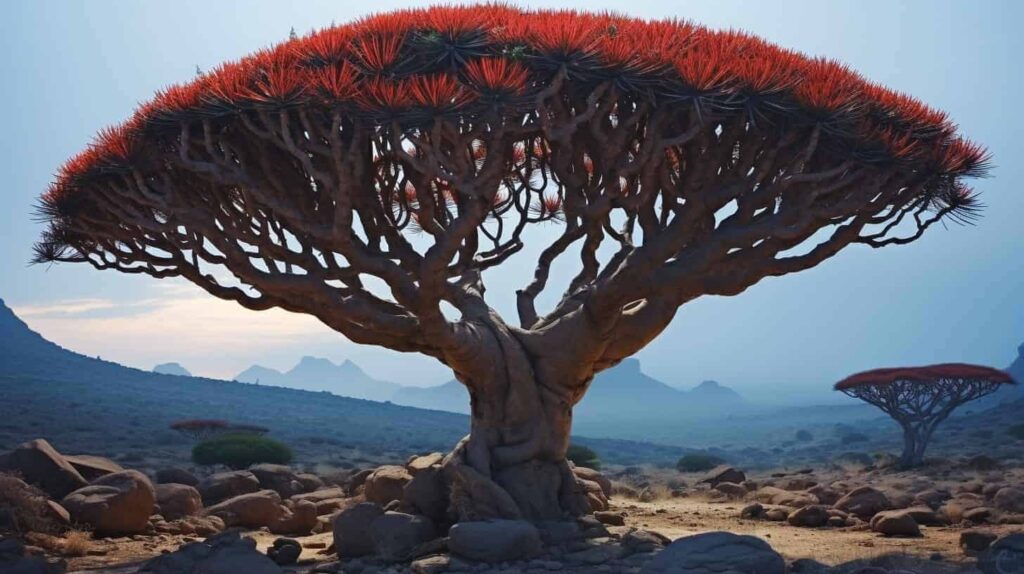
The Dragon’s Blood Tree is a distinctive, umbrella-shaped tree native to Socotra Island in Yemen but also found in tropical rainforests. It gets its name from the red sap that it produces, known as “dragon’s blood,” which has been used for centuries in medicine, dye, and incense. The tree’s unique shape allows it to collect moisture from the air, making it well-adapted to arid environments. Dragon’s blood trees are slow-growing but long-lived, with some individuals surviving for hundreds of years. These trees are vital for the local ecosystem and economy.
14. Tonka Bean Tree (Dipteryx odorata)
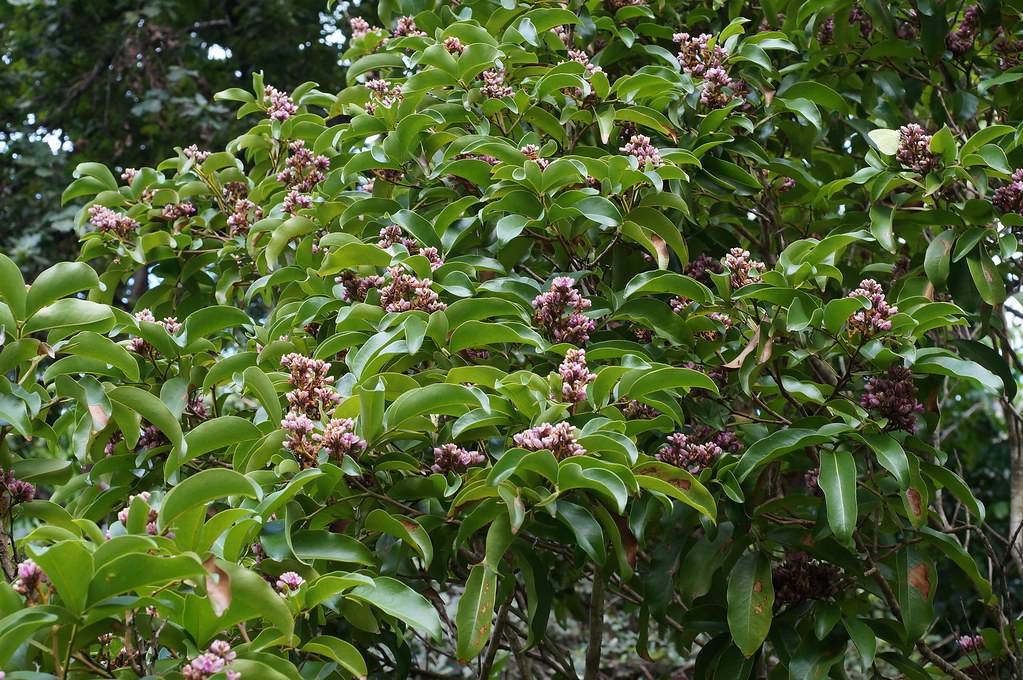
The Tonka Bean Tree is a large rainforest tree native to South America, growing up to 100 feet tall. It produces long, hard pods containing fragrant seeds, known as tonka beans. These beans are highly valued for their sweet, vanilla-like aroma and are used in perfumes, cosmetics, and culinary dishes. Despite their popularity, tonka beans are banned in some countries due to the presence of coumarin, a chemical compound that can be toxic in large amounts. The tree plays an important ecological role in the rainforest by providing food and shelter for wildlife.
15. Cannonball Tree (Couroupita guianensis)
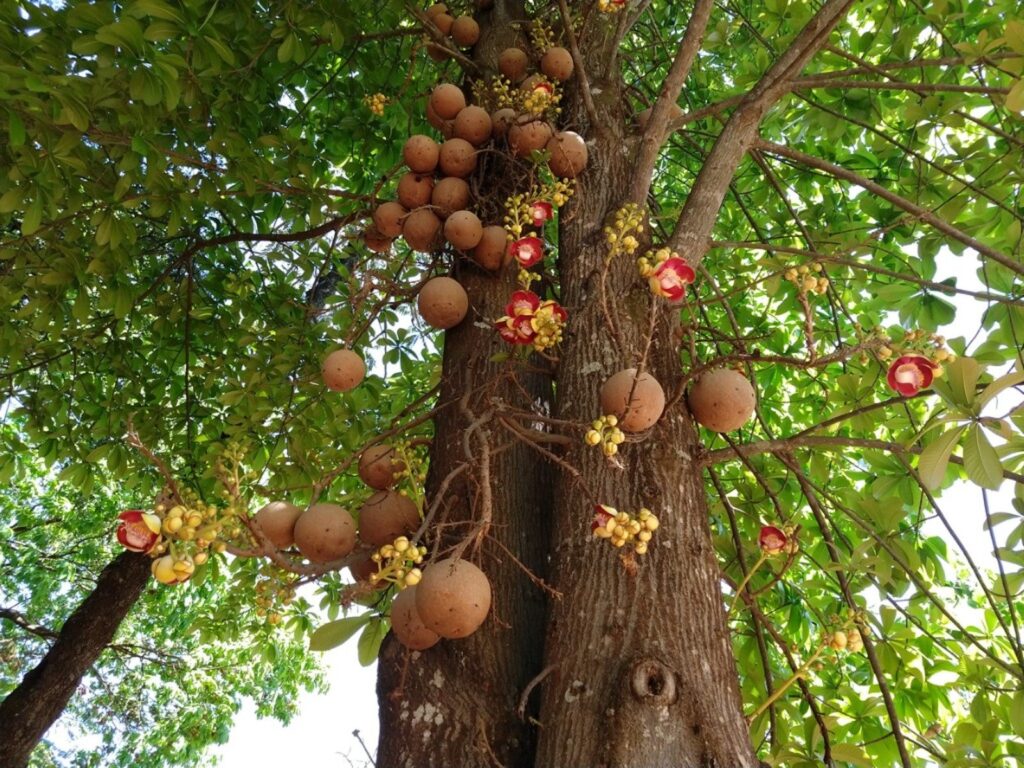
The Cannonball Tree is a striking rainforest tree, known for its large, round fruits that resemble cannonballs and its bright orange-red flowers. The tree can grow up to 100 feet tall and is native to tropical regions of Central and South America. The flowers are highly fragrant and attract a variety of pollinators, including bees and bats. The fruits are edible but are not commonly consumed due to their strong smell and tough exterior. Cannonball trees are often planted in public spaces and gardens for their ornamental value.
16. Banyan Tree (Ficus benghalensis)
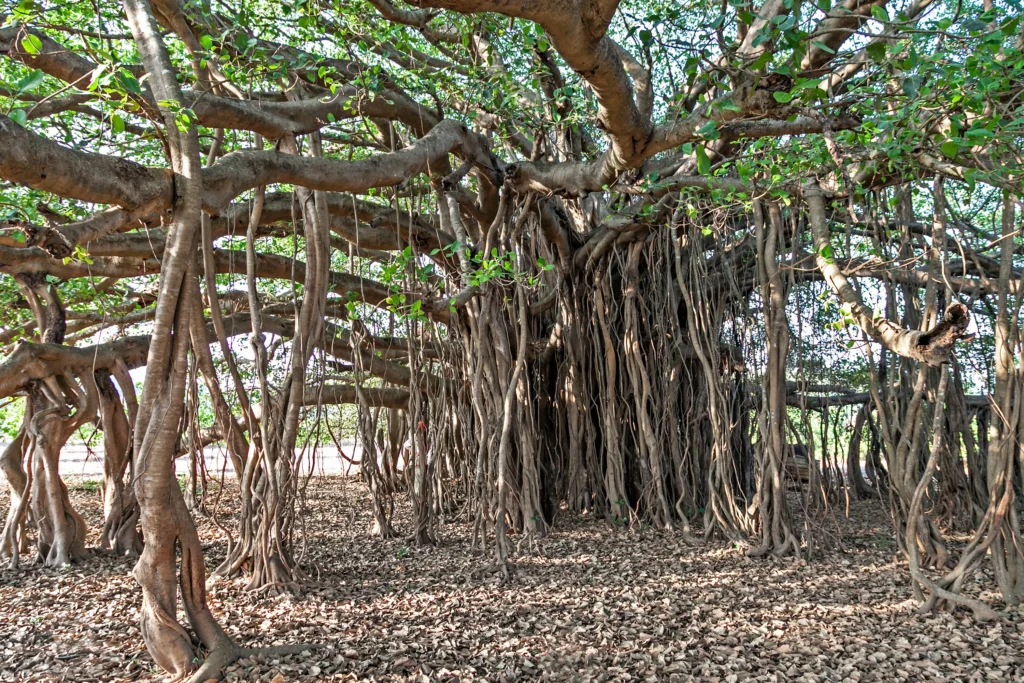
The Banyan Tree is one of the most iconic rainforest trees, known for its aerial roots that descend from branches and take root in the ground, forming new trunks. Over time, a single banyan tree can cover an area of
several acres, creating a network of interconnected trunks. These trees are considered sacred in many cultures, particularly in India, where they symbolize longevity and immortality. Banyan trees provide important habitats for birds, insects, and small mammals, and their extensive root systems help prevent soil erosion in the rainforest.
17. Rosewood Tree (Dalbergia spp.)
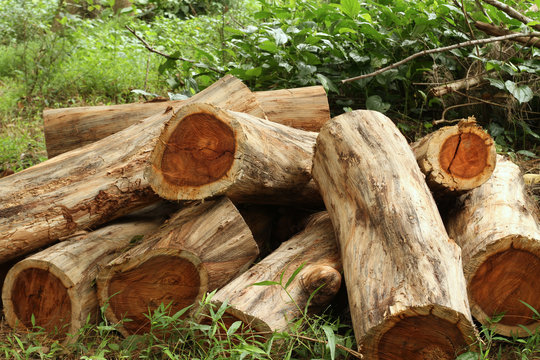
The Rosewood Tree is a valuable hardwood species native to tropical rainforests, known for its rich, dark red-brown wood. Rosewood is highly prized for its use in fine furniture, musical instruments, and luxury items. However, overharvesting has led to significant population declines, and many rosewood species are now endangered. These trees can grow up to 100 feet tall and play an important role in rainforest ecosystems by providing shelter and food for wildlife. Conservation efforts are crucial to ensuring the survival of rosewood trees in the wild.
18. Jacaranda Tree (Jacaranda mimosifolia)
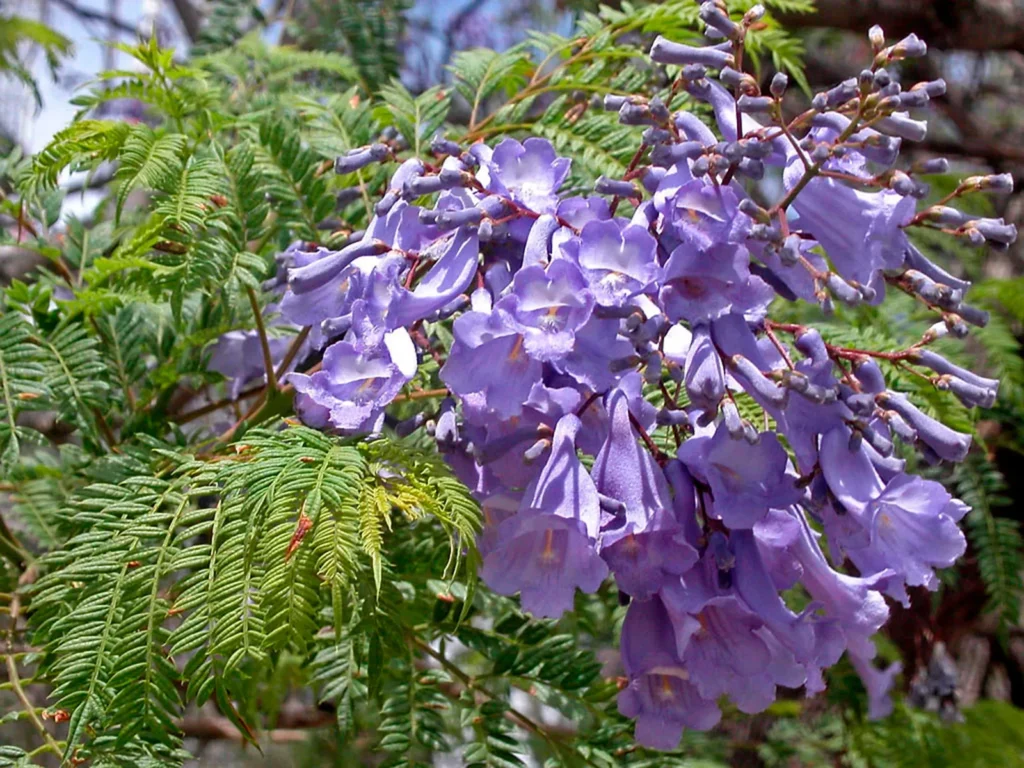
The Jacaranda Tree is known for its stunning lavender-blue flowers that bloom in spring, creating a spectacular display. These medium-sized trees can grow up to 50 feet tall and are native to South American rainforests. Jacaranda trees are commonly planted in urban areas and parks due to their ornamental value. The tree’s flowers attract pollinators such as bees and butterflies, making it an important species for supporting biodiversity. Although it is not native to many regions where it is now planted, it has adapted well to various environments.
19. Marula Tree (Sclerocarya birrea)
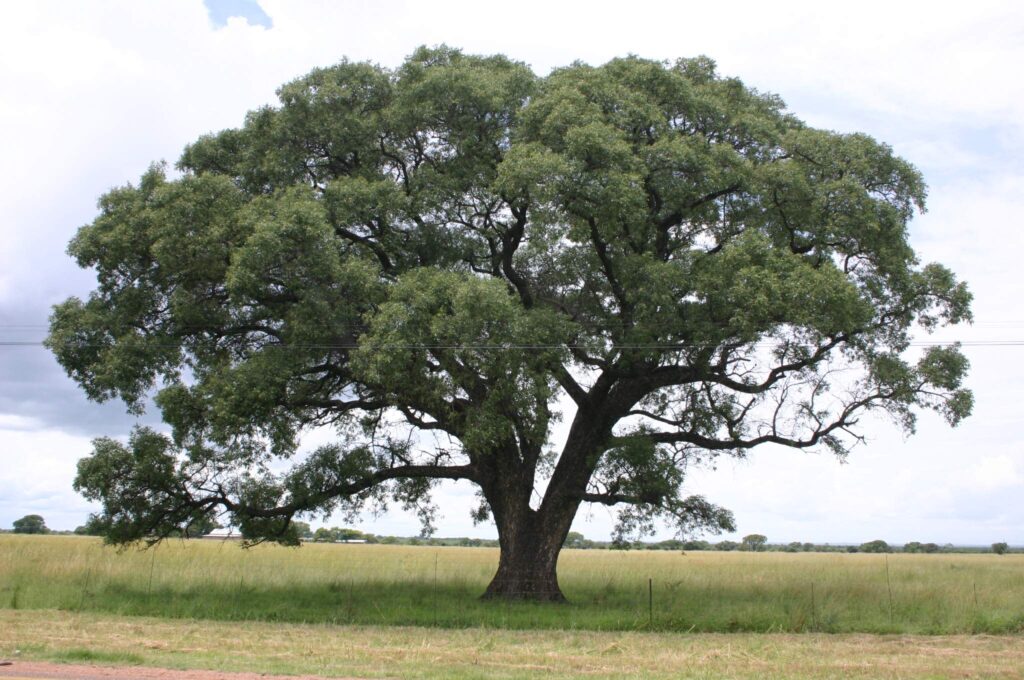
The Marula Tree is native to tropical regions of Africa and is known for its small, yellow fruits that are used to make the popular South African liqueur Amarula. The fruits are also eaten by wildlife, including elephants, which are known to consume large amounts and become intoxicated when the fruit ferments. Marula trees grow up to 60 feet tall and have a thick, rough bark. The tree is highly valued for its fruit, which is rich in vitamin C, and for its seeds, which are used to produce marula oil, a popular ingredient in cosmetics.
20. Silk Cotton Tree (Bombax ceiba)
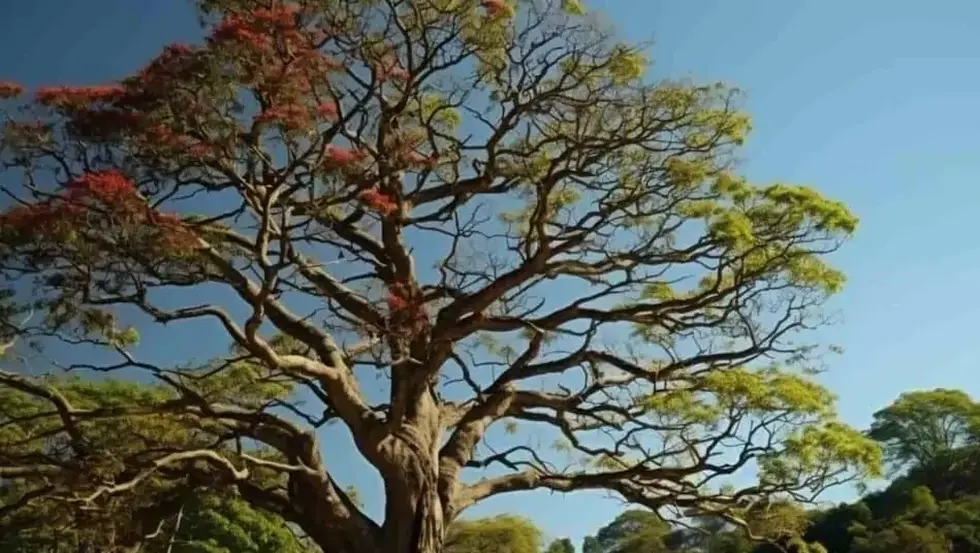
The Silk Cotton Tree is a large rainforest tree, reaching up to 250 feet tall, known for its bright red flowers and massive buttress roots. These trees produce seed pods filled with silky fibers that were historically used in textiles. The tree’s flowers attract a variety of wildlife, including birds, bees, and bats. Silk cotton trees play a vital role in rainforest ecosystems by providing habitats and food for numerous species. In many cultures, the tree is considered sacred and is often associated with spiritual practices and beliefs.
Conclusion
Rainforest trees and plants are essential components of the world’s most biodiverse ecosystems. From providing food and shelter to supporting global industries like chocolate and rubber, these 20 species represent just a small fraction of the incredible variety found in rainforests around the world. Each species contributes uniquely to its environment, playing a crucial role in maintaining the health and balance of these complex ecosystems. Conservation efforts are vital to ensure that these trees and plants continue to thrive and support the rich biodiversity of the rainforest.
